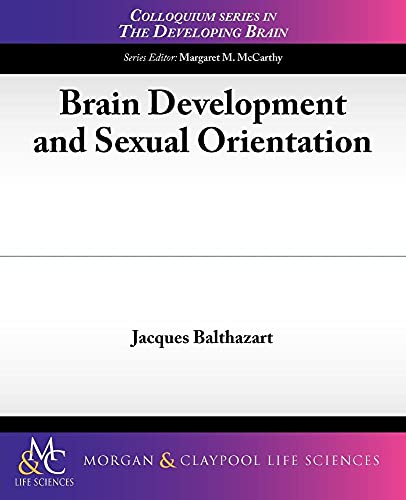
Synopsis
Sexual orientation (homo- vs. heterosexuality) is one of many sex differences observed in humans. Sex differences can result from differential postnatal experiences (interaction with parents, environment) or from biological factors (hormones and genes) acting pre- or postnatally. The first option is often favored to explain sexual orientation although it is supported by little experimental evidence. In contrast, many sexually differentiated behaviors are organized during early life by an irreversible action of sex steroids. In particular, the preference for a male or female sex partner is largely determined in rodents by embryonic exposure to sex steroids. The early action of these steroids also seems to affect sexual orientation in humans. Indeed, clinical conditions associated with major endocrine changes during embryonic life often result in an increased incidence of homosexuality. Furthermore, multiple sexually differentiated behavioral, physiological, or even morphological traits that are known to be organized by prenatal steroids, at least in animals, are significantly different in homo- and heterosexual populations. Thus, prenatal endocrine (or genetic) factors seem to influence significantly human sexual orientation even if a large fraction of the variance remains unexplained to date. The possible interaction between biological factors acting prenatally and postnatal social influences remains to be investigated.
Table of Contents: Introduction and Definitions / Sex Differences in Animals and Men / The Origins of Human Sex Differences / How Can Effects of Biological Factors on Sexual Orientation Be Studied in Humans? / Endocrine Control of Sex Differences / Organizational Effects of Steroids on Sex Partner Preference in Animals / An Endocrine Model of Human Homosexuality / Sex Steroids Modulate Sexual Motivation during Adulthood in Humans . . . But Not Sexual Orientation / The Organizational Role of Steroids on Sexual Orientation: Analysis of Clinical Cases / Sex Differences Not Related to Sexual Activity Suggest an Atypical Differentiation in Homosexual Subjects / Brain Differences Associated with Sexual Orientation / The Origin of Endocrine Differences Between Embryos / Is There a Role for Postnatal Experiential Factors? / Conclusions / References / Author Biography
"synopsis" may belong to another edition of this title.
Other Popular Editions of the Same Title
Search results for Brain Development and Sexual Orientation (Colloquium...
Brain Development and Sexual Orientation (Colloquium Series on the Developing Brain)
Seller: suffolkbooks, Center moriches, NY, U.S.A.
paperback. Condition: Very Good. Fast Shipping - Safe and Secure 7 days a week! Seller Inventory # 3TWOWA001O1U
Brain Development and Sexual Orientation (Paperback or Softback)
Seller: BargainBookStores, Grand Rapids, MI, U.S.A.
Paperback or Softback. Condition: New. Brain Development and Sexual Orientation. Book. Seller Inventory # BBS-9781615044580
Brain Development and Sexual Orientation (Colloquium Series on the Developing Brain)
Seller: Lucky's Textbooks, Dallas, TX, U.S.A.
Condition: New. Seller Inventory # ABLING22Oct2817100162508
Brain Development and Sexual Orientation (Colloquium Series on the Developing Brain)
Seller: Ria Christie Collections, Uxbridge, United Kingdom
Condition: New. In. Seller Inventory # ria9781615044580_new
Buy New
Quantity: Over 20 available
Brain Development and Sexual Orientation
Seller: Revaluation Books, Exeter, United Kingdom
Paperback. Condition: Brand New. 121 pages. 9.00x7.50x0.50 inches. In Stock. Seller Inventory # x-1615044582
Buy New
Quantity: 2 available
Brain Development and Sexual Orientation
Seller: THE SAINT BOOKSTORE, Southport, United Kingdom
Paperback / softback. Condition: New. This item is printed on demand. New copy - Usually dispatched within 5-9 working days. Seller Inventory # C9781615044580
Buy New
Quantity: Over 20 available
Brain Development and Sexual Orientation
Print on DemandSeller: moluna, Greven, Germany
Condition: New. Dieser Artikel ist ein Print on Demand Artikel und wird nach Ihrer Bestellung fuer Sie gedruckt. KlappentextSexual orientation (homo- vs. heterosexuality) is one of many sex differences observed in humans. Sex differences can result from differential postnatal experiences (interaction with parents, environment) or from biological fa. Seller Inventory # 448166679
Buy New
Quantity: Over 20 available
Brain Development and Sexual Orientation
Print on DemandSeller: AHA-BUCH GmbH, Einbeck, Germany
Taschenbuch. Condition: Neu. nach der Bestellung gedruckt Neuware - Printed after ordering - Sexual orientation (homo- vs. heterosexuality) is one of many sex differences observed in humans. Sex differences can result from differential postnatal experiences (interaction with parents, environment) or from biological factors (hormones and genes) acting pre- or postnatally. The first option is often favored to explain sexual orientation although it is supported by little experimental evidence. In contrast, many sexually differentiated behaviors are organized during early life by an irreversible action of sex steroids. In particular, the preference for a male or female sex partner is largely determined in rodents by embryonic exposure to sex steroids. The early action of these steroids also seems to affect sexual orientation in humans. Indeed, clinical conditions associated with major endocrine changes during embryonic life often result in an increased incidence of homosexuality. Furthermore, multiple sexually differentiated behavioral, physiological, or even morphological traits that are known to be organized by prenatal steroids, at least in animals, are significantly different in homo- and heterosexual populations. Thus prenatal endocrine (or genetic) factors seem to influence significantly human sexual orientation even if a large fraction of the variance remains unexplained to date. The possible interaction between biological factors acting prenatally and postnatal social influences remains to be investigated. Seller Inventory # 9781615044580
Brain Development and Sexual Orientation
Print on DemandSeller: preigu, Osnabrück, Germany
Taschenbuch. Condition: Neu. Brain Development and Sexual Orientation | Jacques Balthazart | Taschenbuch | Kartoniert / Broschiert | Englisch | 2012 | Biota Publishing | EAN 9781615044580 | Verantwortliche Person für die EU: Libri GmbH, Europaallee 1, 36244 Bad Hersfeld, gpsr[at]libri[dot]de | Anbieter: preigu Print on Demand. Seller Inventory # 106245677
Brain Development and Sexual Orientation (Colloquium Series on the Developing Brain)
Seller: Mispah books, Redhill, SURRE, United Kingdom
Paperback. Condition: Like New. Like New. Ships from Multiple Locations. book. Seller Inventory # ERICA79016150445826
Buy Used
Quantity: 1 available

